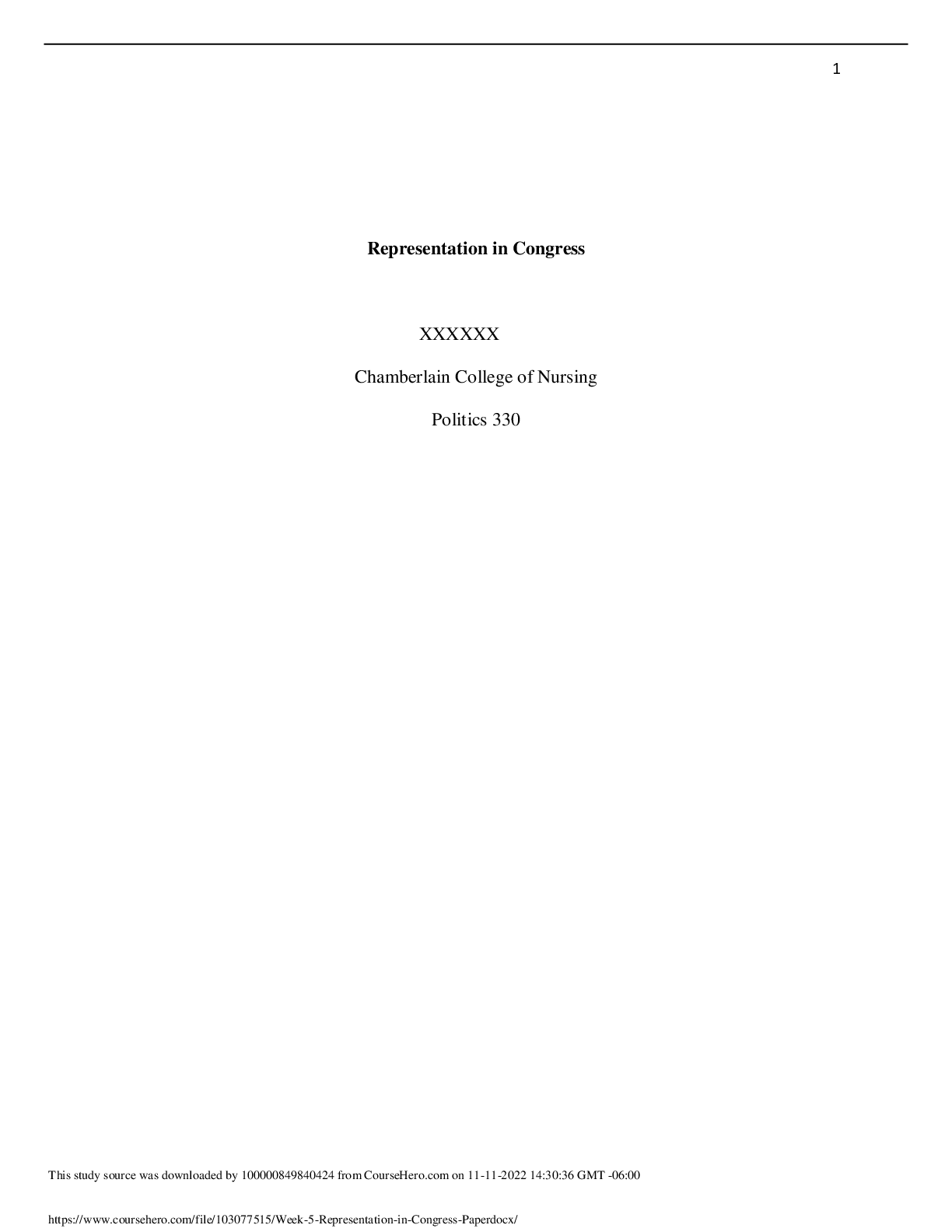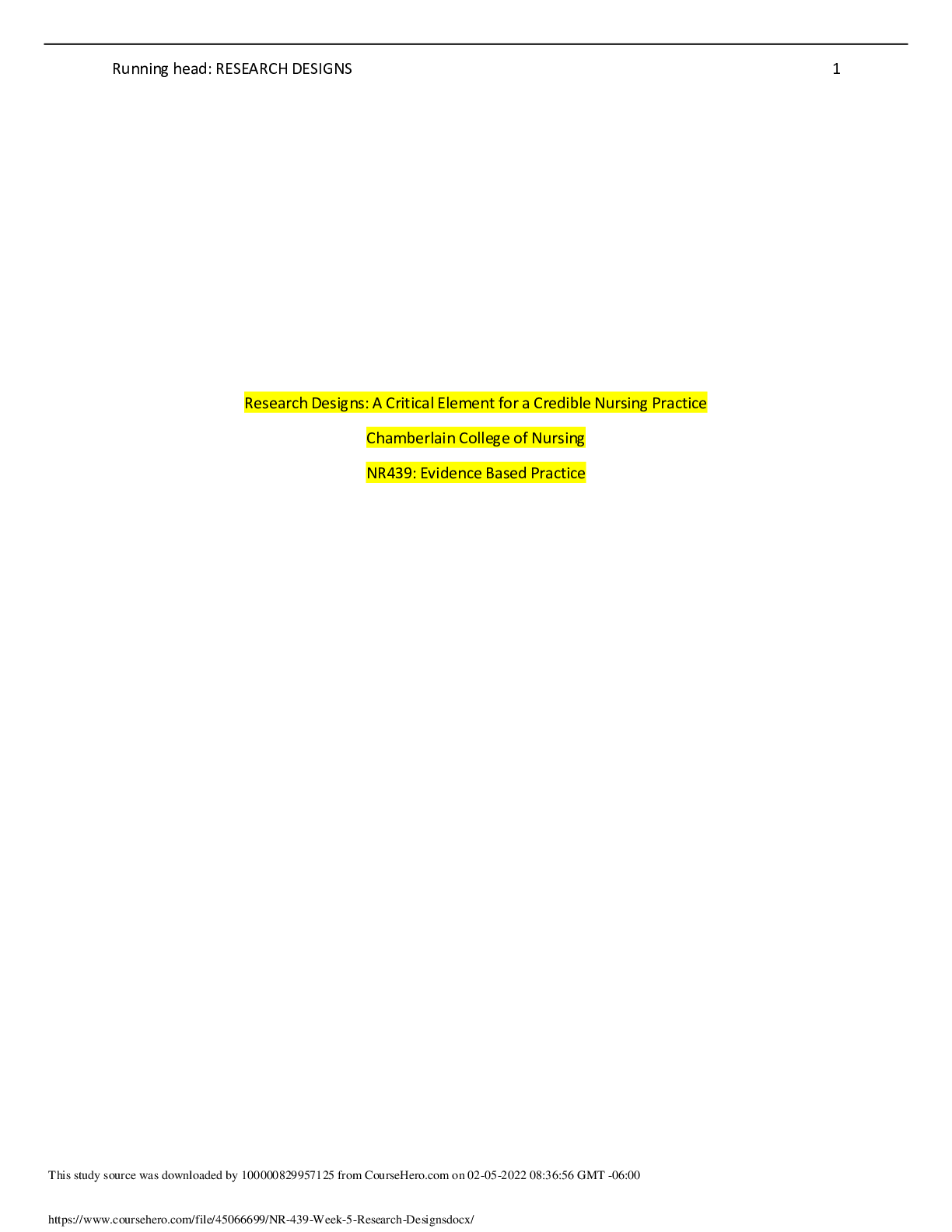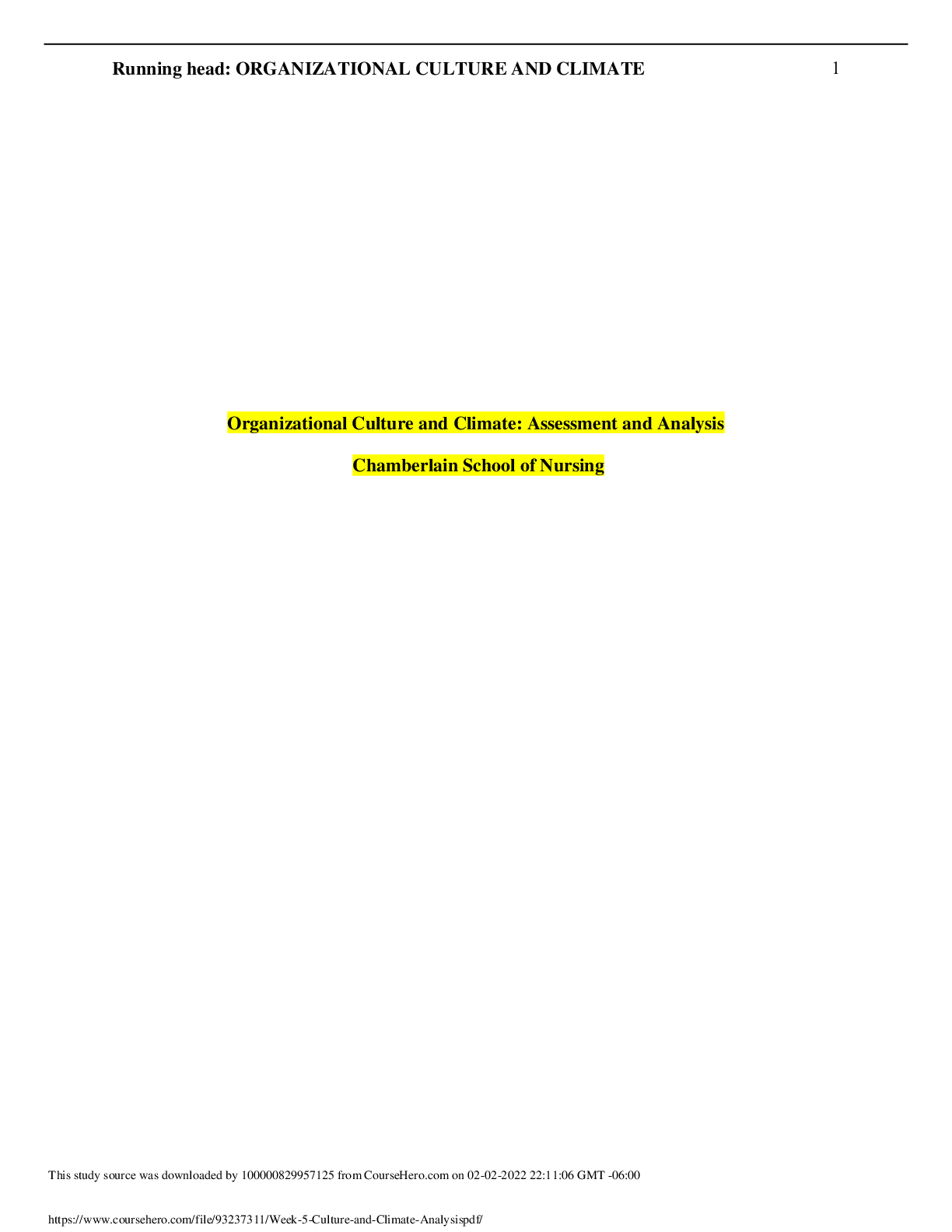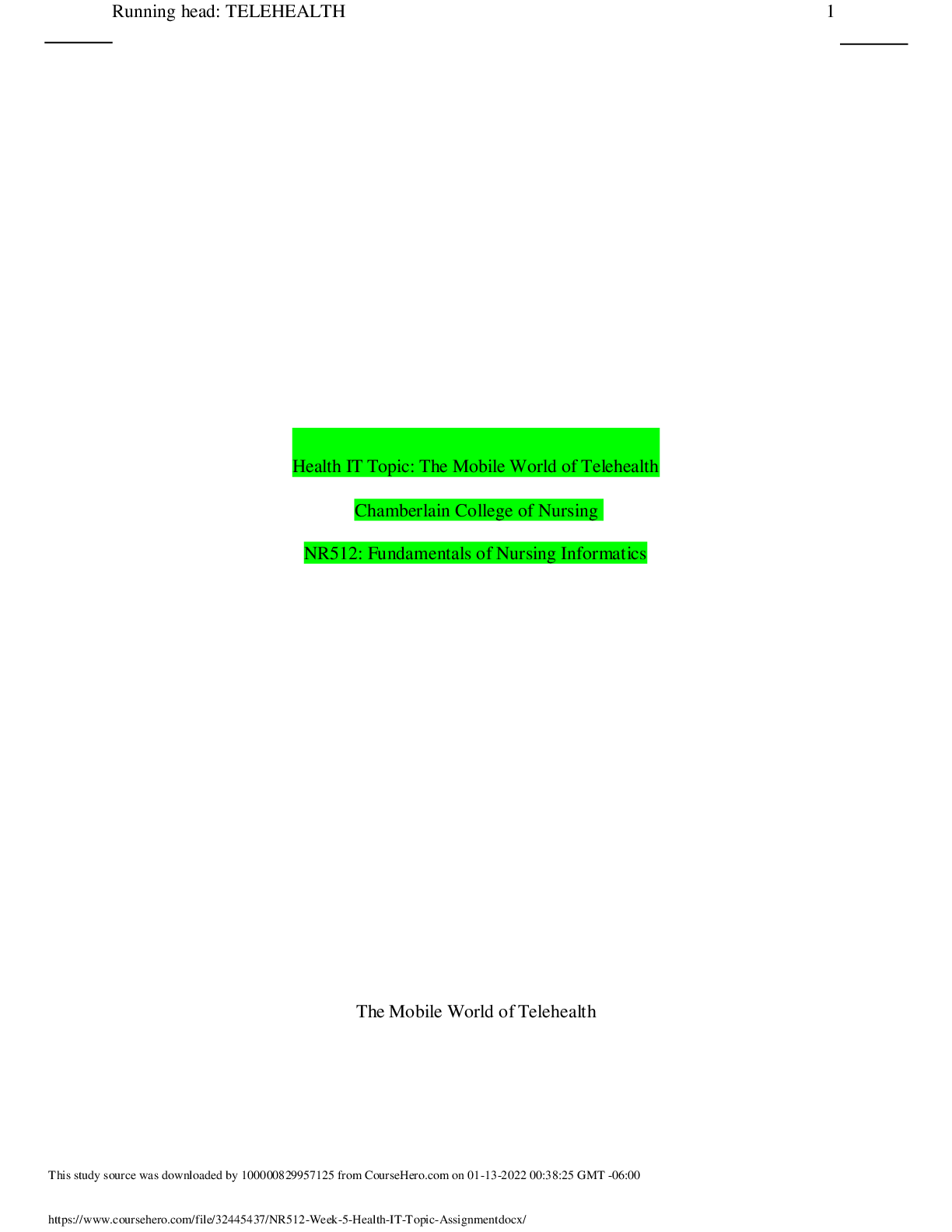*NURSING > CASE STUDY > NR 566 Week 5 Assignment: Immunization – Pneumococcal 23-valent polysaccharide (PPSV23)/ TOP SCORE (All)
NR 566 Week 5 Assignment: Immunization – Pneumococcal 23-valent polysaccharide (PPSV23)/ TOP SCORE
Document Content and Description Below
NR-566 Week 5 Assignment: Immunization – Pneumococcal 23-valent polysaccharide (PPSV23) Immunization Assignment Chamberlain University College of Nursing N... R-566 Pharmacology for Primary Care Immunizations are an important part of becoming a healthy adult. The process in which a person is made resistant to infectious diseases and illness is through immunizations or vaccines. Vaccines are known to protect people from diseases like Diphtheria, Tetanus, and Pertussis (DTaP) and pneumococcal disease. This paper will highlight the name of 2 diseases and their respected vaccines, along with important information regarding those vaccines. PPSV23 Pneumococcal disease is a pneumococcal infection caused by Streptococcus pneumoniae bacteria. The preventable vaccination for this bacterium is the Pneumococcal 23- valent polysaccharide vaccine (PPSV). Its trade name is Pneumovax 23. This vaccine is an inactivated type and is contraindicated in persons with previous history of anaphylactic or severe allergic reaction to any component of the pneumococcal vaccine, have a cochlear implant, or those with a chronic cerebrospinal fluid leak (Micromedex, 2020). Precautions include patients who are immunocompromised (may not have expected antibody response) (Micromedex, 2020). Patients who have an acute illness (vaccination should be deferred) (CDC, 2020). Patients who have a severe cardiovascular or respiratory dysfunction (a systemic reaction could occur) (Micromedex, 2020).When also giving the Zostavax® vaccine, these vaccines should be given separately (at least 4 weeks apart) to avoid a reduced immune response to the Zoster vaccine (CDC, 2020). Adverse drug reactions that can occur are erythema and/or tenderness at injection site, myalgia, and fatigue. The minimum age to receive vaccine is 2 years old and older (ACIP, 2020). All patients between 2 years old and 65 years old receive a one-time dose of 0.5 ml intramuscularly or subcutaneously (ACIP, 2020). Special situations include patients who have never received any pneumococcal vaccines should first be administered a dose of PCV13. After the initial dose of PCV13, at least 8 weeks later a dose of PPSV23 should be given. Administer a second dose PPSV23 at least 5 years after the first dose of PPSV23. Administer one final dose of PPSV23 at age 65 years or older (ACIP, 2020). DTaP Diphtheria, Tetanus, and Pertussis (DTaP) are three infectious diseases in humans and the DTaP is a class of combination vaccines protecting patients against them. The preventable vaccination name is Daptacel®. The trade name is Infanrix and it is an inactivated vaccine. Contraindications include persons with a previous history of anaphylaxis or severe allergic reaction to any component of the DTap Vaccine, a progressive neurologic disorder, a gelatin or thimerosal allergy, or encephalopathy (Micromedex, 2020). Precautions consist of a hypersensitivity reactions can occur, after a previous tetanus-toxoid-containing vaccination, defer vaccination for at least 10 years since the last tetanus containing vaccine. (Micromedex, 2020). Patients who are immunocompromised (may not have expected antibody response) (Micromedex, 2020). Latex allergy- Infanrix® vial stopper and tip cap of prefilled syringes may contain latex rubber (Micromedex, 2020). Premature infants- apnea has been observed following IM vaccination, assess risk/benefit prior to administration (Micromedex, 2020). Adverse drug reactions involve syncopal episodes, tonic-clonic movements, paresthesia, visual changes, and other neurological signs (Micromedex, 2020). Injections site cellulitis and cellulitis at other places other than injections site have been reported after administration (CDC, 2020). The minimum age to receive this vaccine is as early as 6 weeks (ACIP, 2020). The routine recommended vaccine schedule (timing and dose) is to Give 0.5 ml IM for 5 doses at 2 months, 4 months, 6 months, 15-18 months, and 4-6 years (ACIP, 2020). Special situations include providers may revaccinate children less than 7 years of age who do not have accurate vaccine schedules available or whose record shows more than 3 doses of DTP or DTaP, however, data suggests that the risk of local adverse reactions after the third and fourth doses increase drastically. If a severe allergic reaction occurs, it is recommended that the provider check for specific IgG antibodies to tetanus and diphtheria toxins be done before another TDaP vaccine (ACIP, 2020). Barriers & Interventions When healthcare professionals ask parents why their children are not vaccinated, there are numerous reasons as to why someone refuses to vaccinate themselves or their children. According to the World Health Organization (2020), vaccine hesitancy can be influenced by factors such as complacency, convenience, and confidence. Complacency refers to the idea that the risks of contracting many of the diseases are extremely low and therefore the vaccine isn’t needed, but it is our task as healthcare professionals to educate these parents and informing them of the risks they take if the children go unvaccinated (WHO, 2020). Convenience refers to the accessibility to the vaccines as well as their affordability. Parents also lack confidence in the vaccine, meaning they feel it may cause more harm than good like cause Autism and other lifelong disorders. One intervention that Nurse Practitioners can do to improve vaccination compliance is to create a reminder system in the office for parents to keep up with vaccination schedules. Print out the vaccination schedule and mark off the vaccines the child has received, still needs to receive, and the dates in which those should be completed. Have the parents make appointments for 6 months to a year in advance and educate the staff on the importance of calling and reminding the parents of the upcoming appointments and what the appointment will entail. If patients/parents are well informed, the compliance rate will increase (AAP, 2019). Healthcare providers are required by law to report an adverse event when a patient experiences any health problems following a vaccination. The Vaccine Adverse Event Reporting System (VAERS) is a source where healthcare providers can report any adverse events to the CDC and the Food and Drug Administration (FDA) regarding negative effects of a vaccine (CDC, 2020). Adverse events that healthcare providers are encouraged to report are any negative effects that occur after a licensed vaccine is given in the United States, whether or not it is certain the vaccine caused the adverse event (CDC, 2020). Another event that is encouraged to report is if the vaccine was given in error. For example, if the vaccine was given by the wrong route, the wrong timing, the wrong vaccine, or incorrect dosage. A healthcare provider can report an adverse event by going directly to the VAERS website (www.VAERS.hhs.gov ) that is available through the Health and Human Services Department. Once there, the provider clicks on the Report Online Form and begins to fill out all the pertinent information regarding the vaccine and patient. Conclusion It is important to educate and reassure patients and parents that vaccinations are needed to ensure the healthiest outcome for everyone and their children. Although, keeping up with vaccination schedules and appointments can be overwhelming, being transparent and informing them of benefits and/or risks will assist them to make informed decisions that best suit them and their families. References: American Academy of Pediatrics [AAP]. (2019). Advocacy and Health Initiatives. Vaccinations. Retrieved from: https://www.aap.org/en-us/advocacy-and-policy/aap-health- initiatives/immunizations/Practice-Management/Pages/vaers.aspx Centers for Disease Control and Prevention [CDC]. (2020). Advisory Committee on Immunization Practices [ACIP]. Retrieved from: https://www.cdc.gov/vaccines/hcp/acip- recs/general-recs/special-situations.html#ref-43 Centers for Disease Control and Prevention [CDC]. (2020). Resources for Healthcare Providers. Retrieved from: https://www.cdc.gov/vaccines/schedules/hcp/imz/child- adolescent.html#note-hepb Micromedex. (2020). Diphtheria, Tetanus, and Acellular Pertussis DTaP. Retrieved from: https://www-micromedexsolutions-com.chamberlainuniversity.idm.oclc.org/micromedex2/ World Health Organization [WHO]. (2020). Vaccine Hesitancy. Retrieved from: https://www.who.int/immunization/research/forums_and_initiatives/1_RButler_VH_Threat_Chil d_Health_gvirf16.pdf?ua=1 Vaccine Adverse Event Reporting System. (2020). Health and Human Services. Report an adverse event-patient information. Retrieved from: https://vaers.hhs.gov/esub/index.jsp [Show More]
Last updated: 1 year ago
Preview 1 out of 6 pages
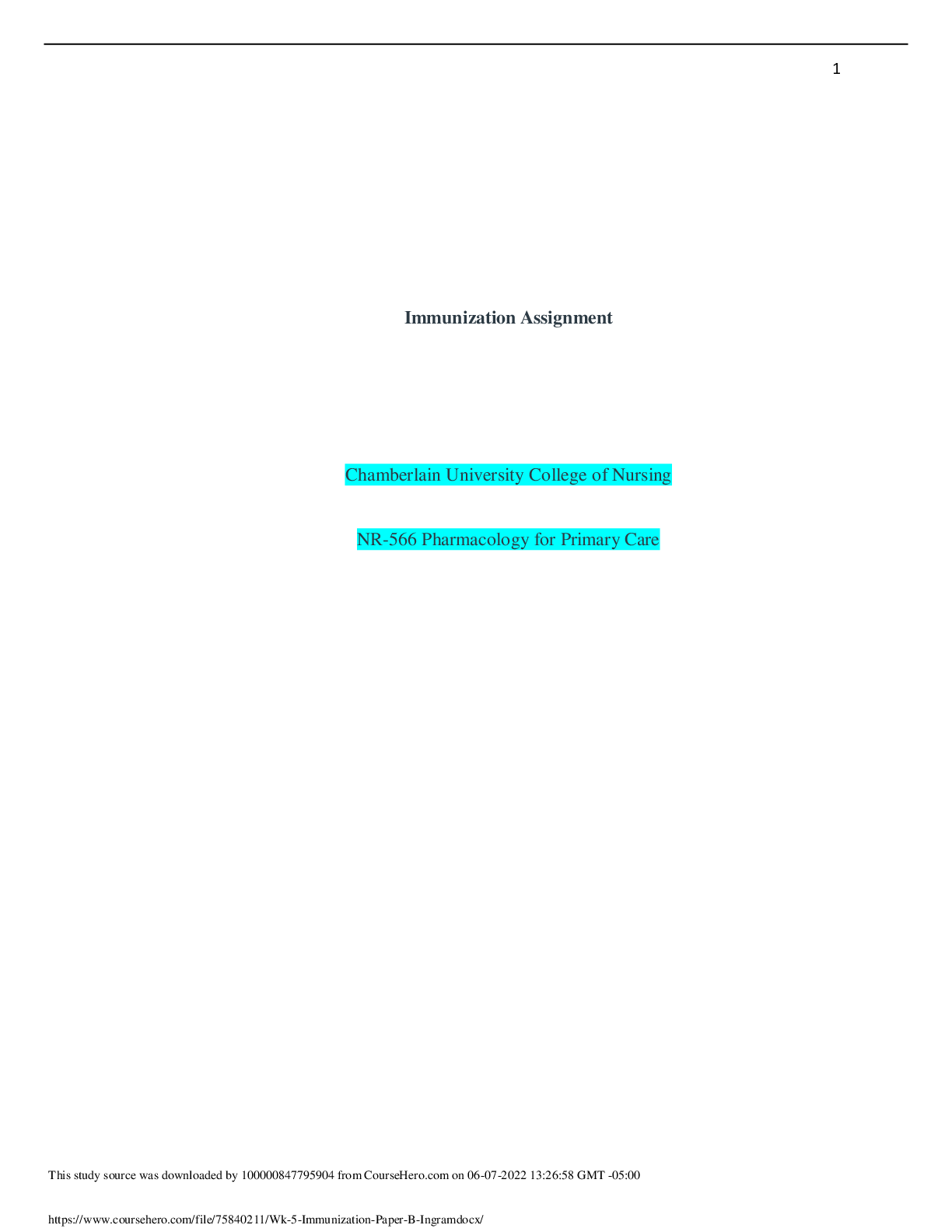
Reviews( 0 )
Document information
Connected school, study & course
About the document
Uploaded On
Jun 07, 2022
Number of pages
6
Written in
Additional information
This document has been written for:
Uploaded
Jun 07, 2022
Downloads
0
Views
53
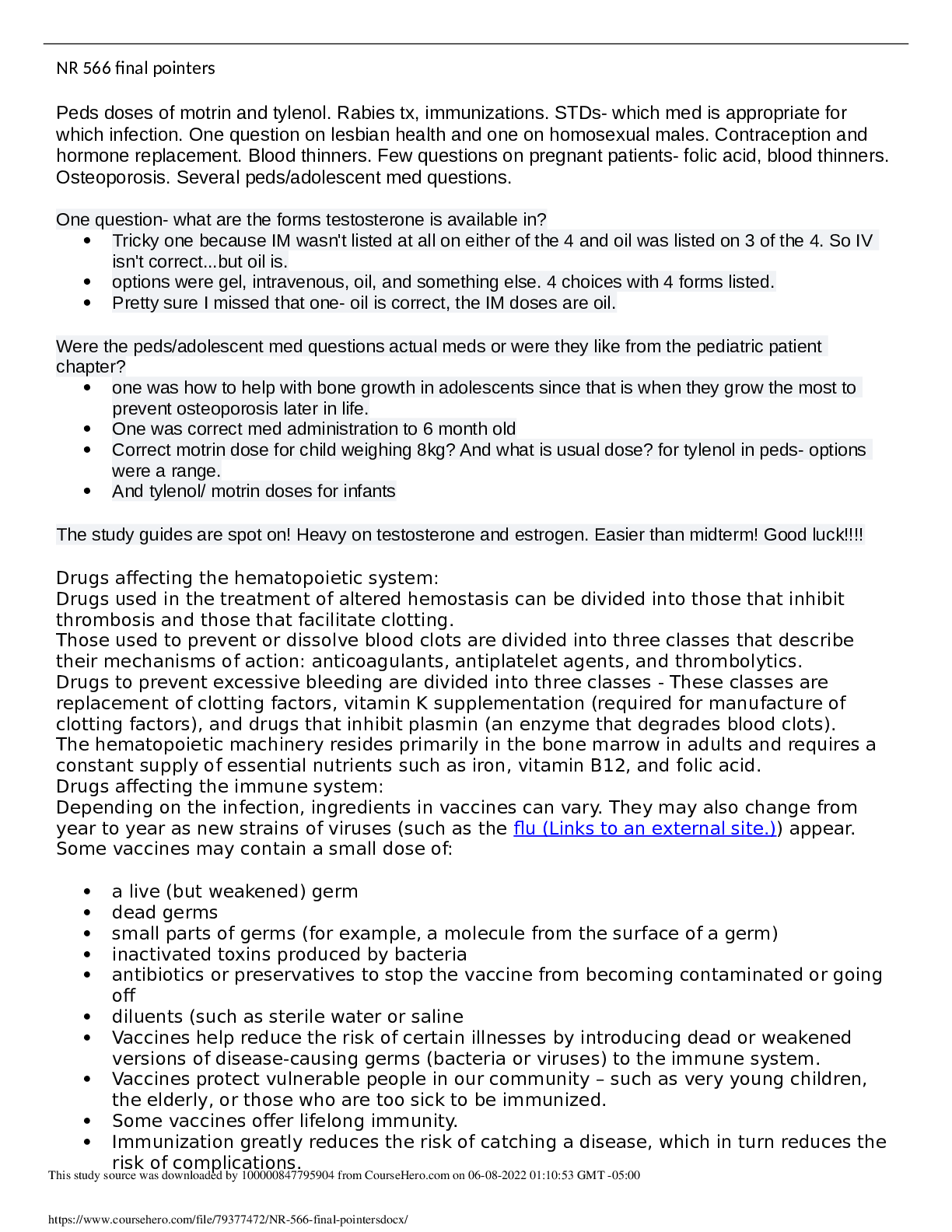



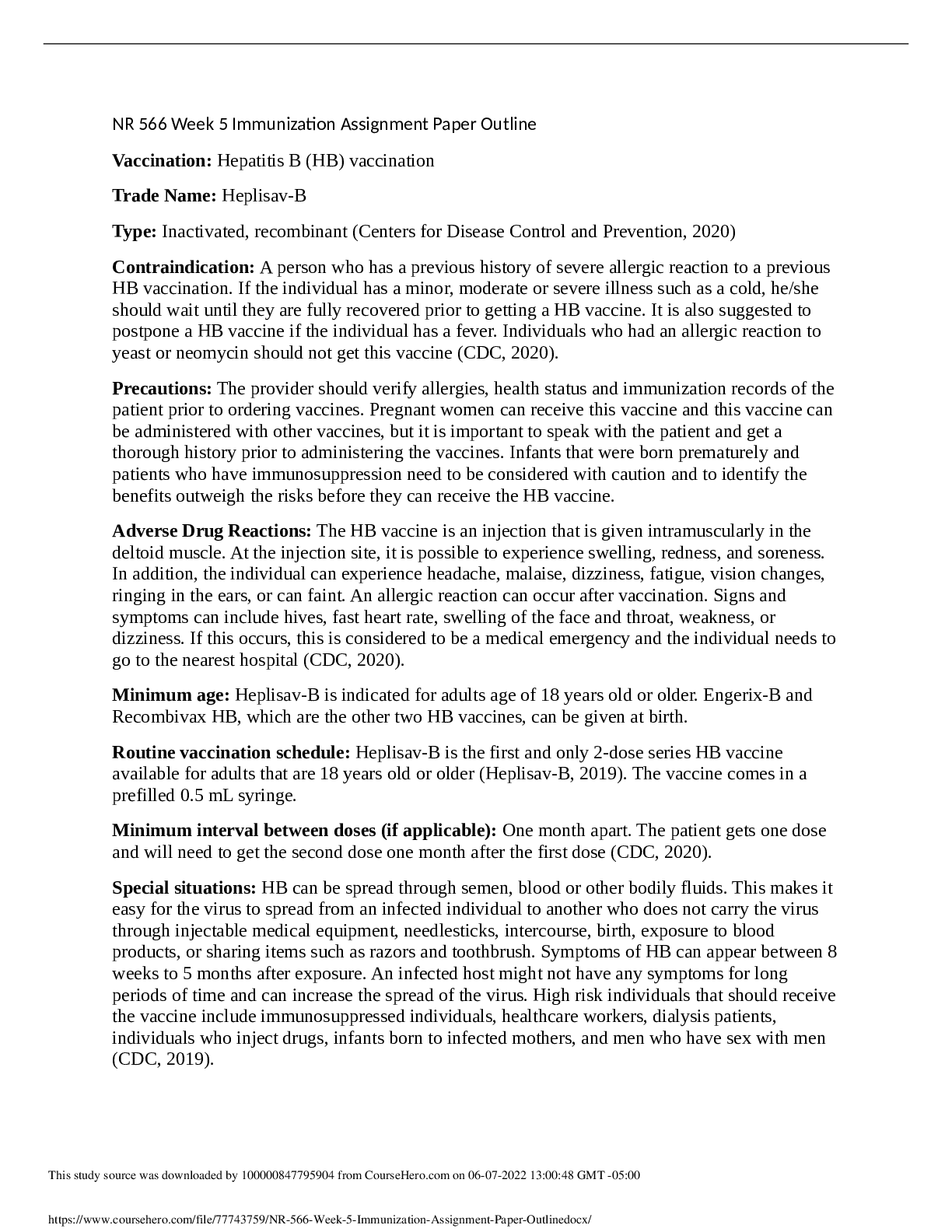
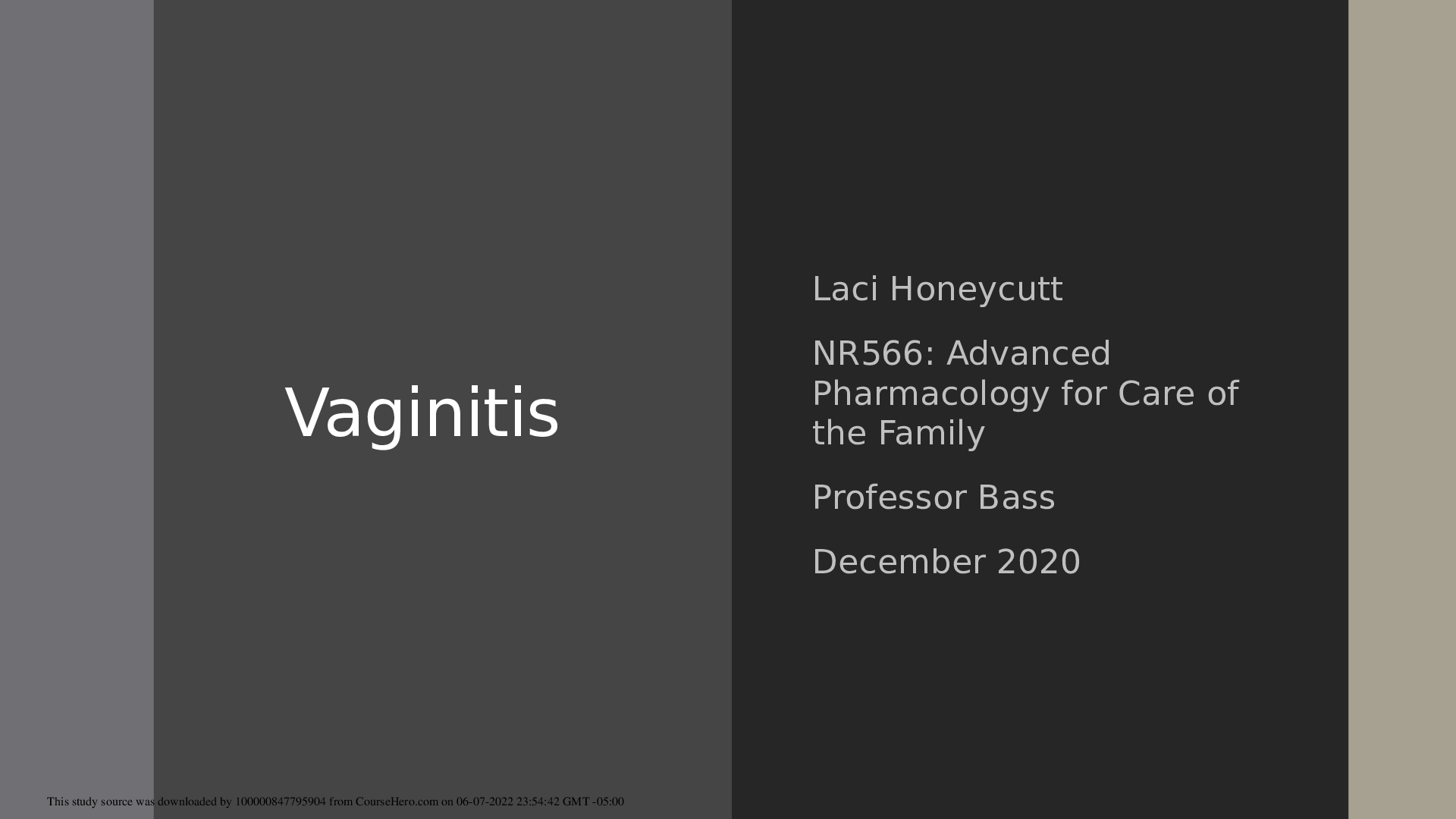
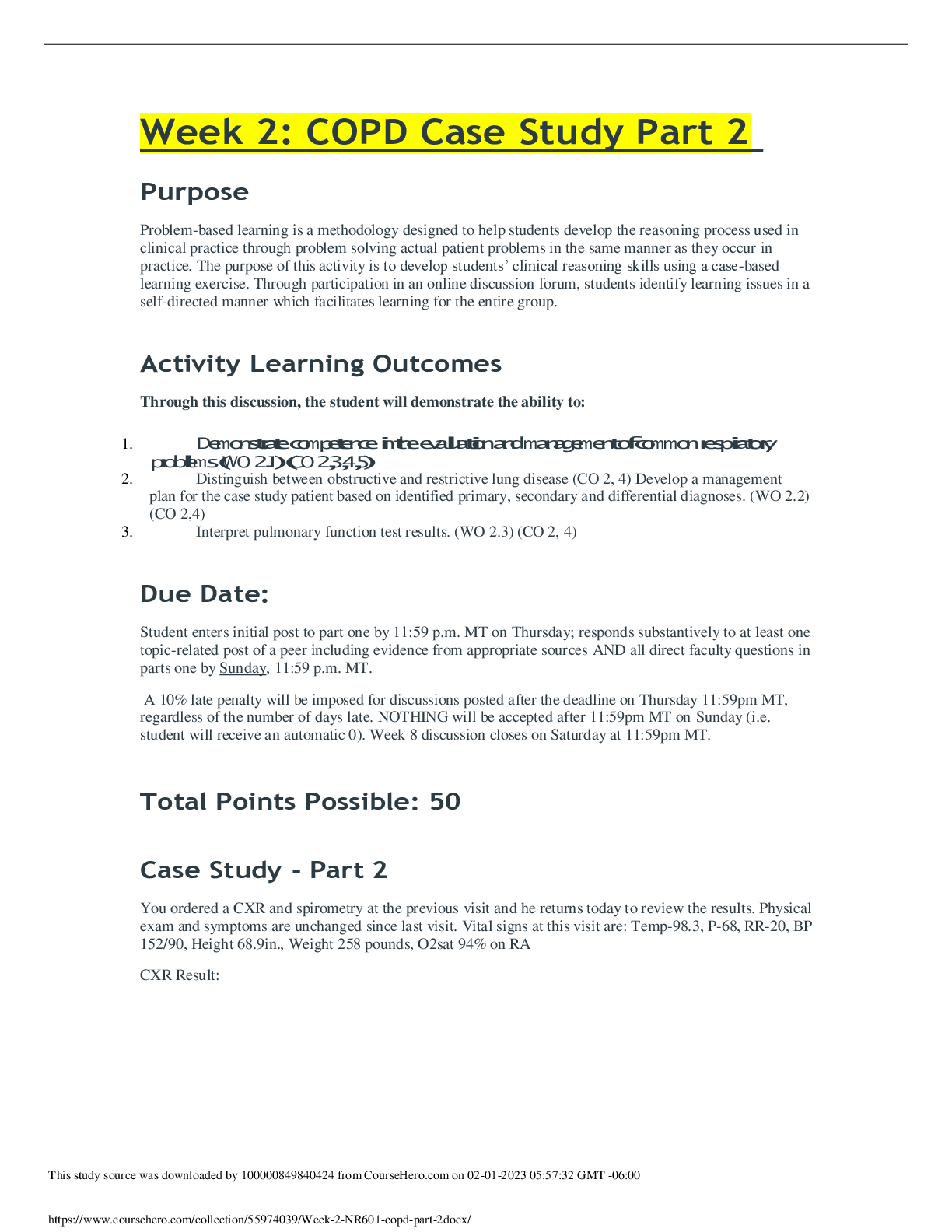
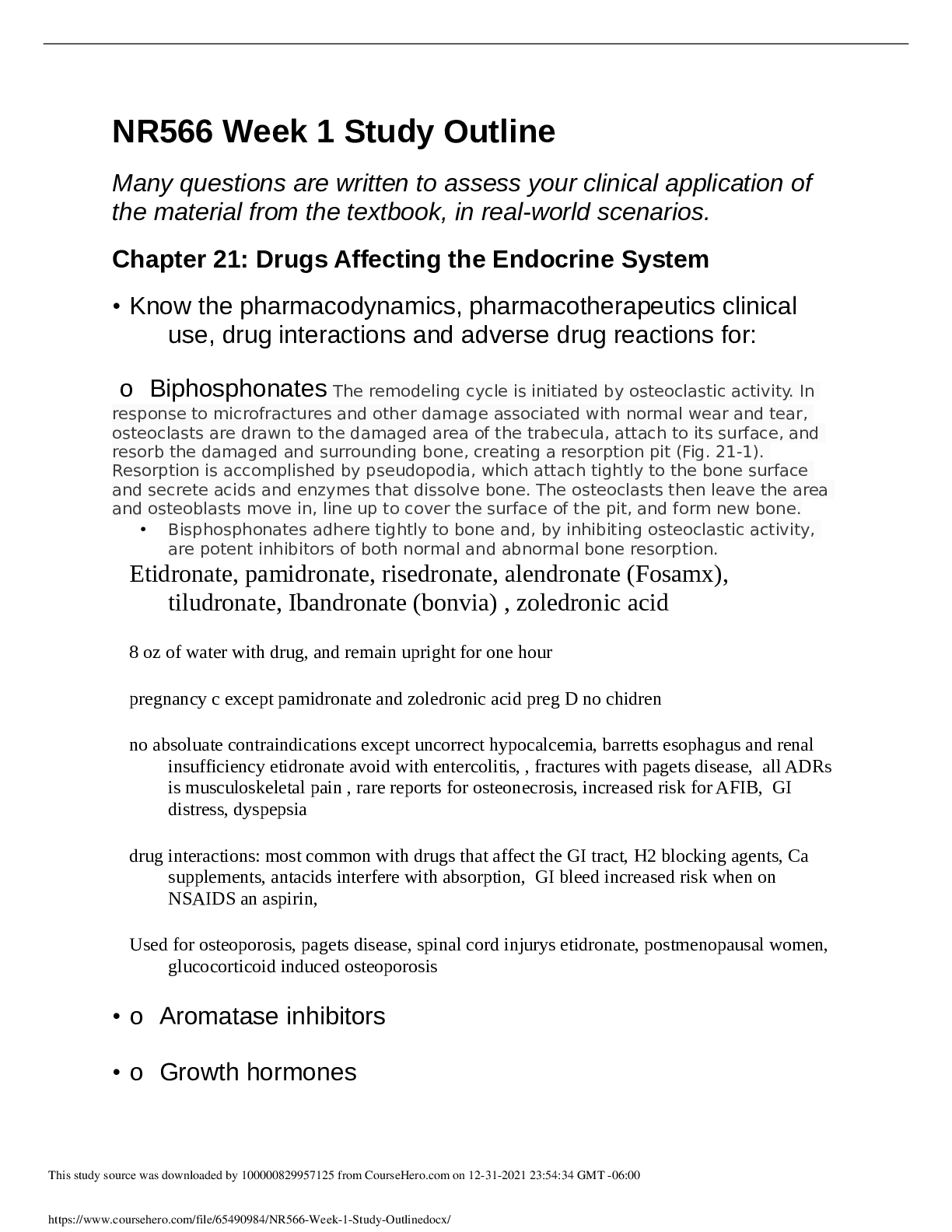
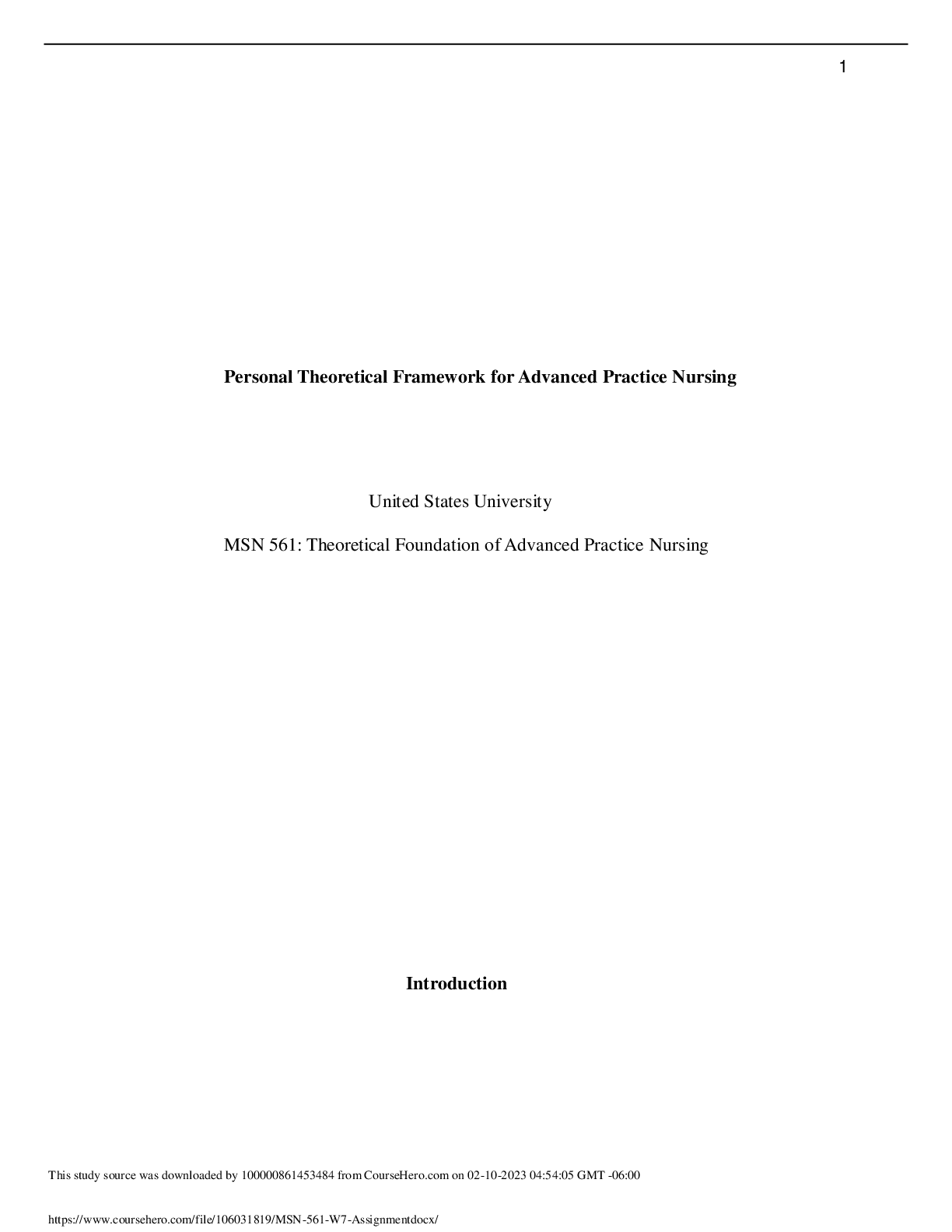
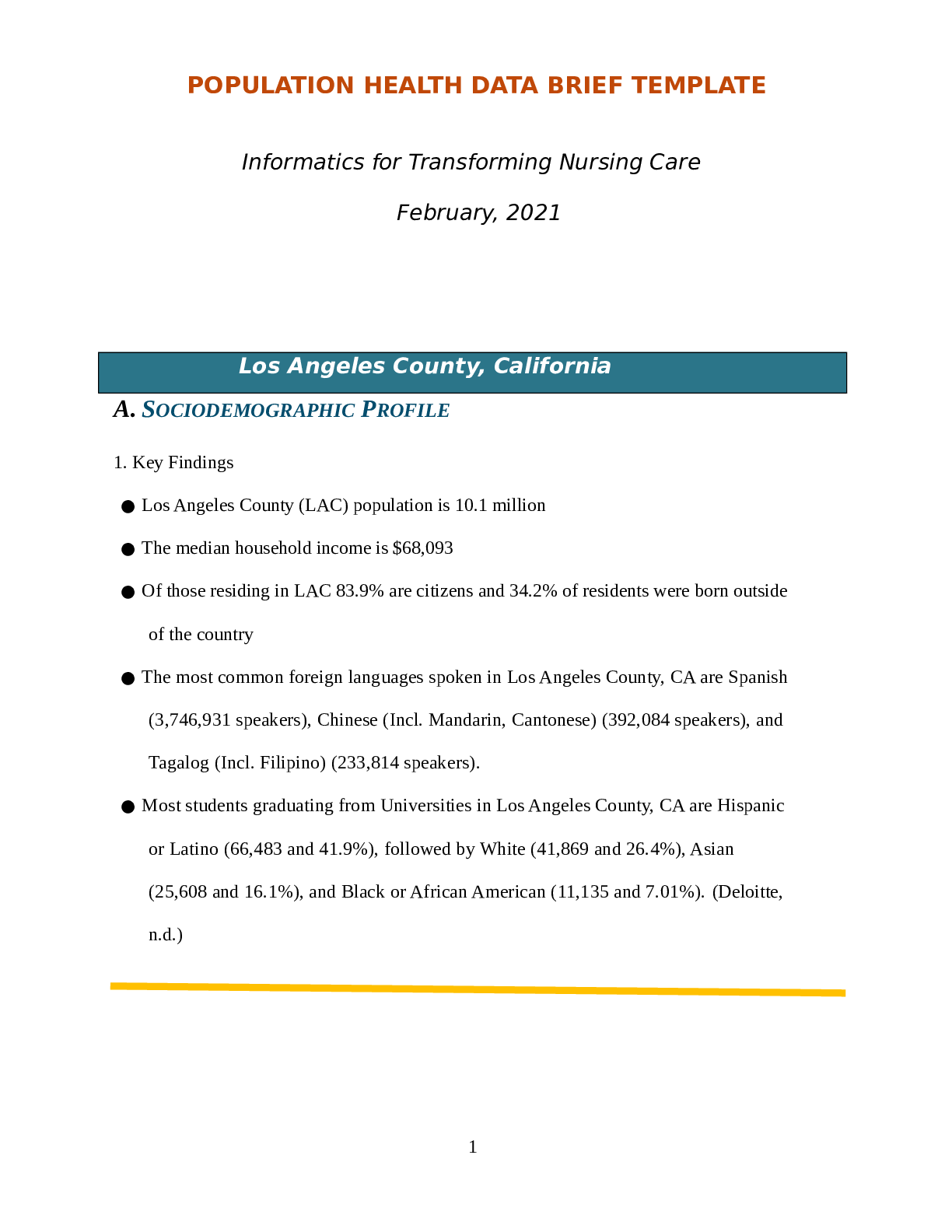

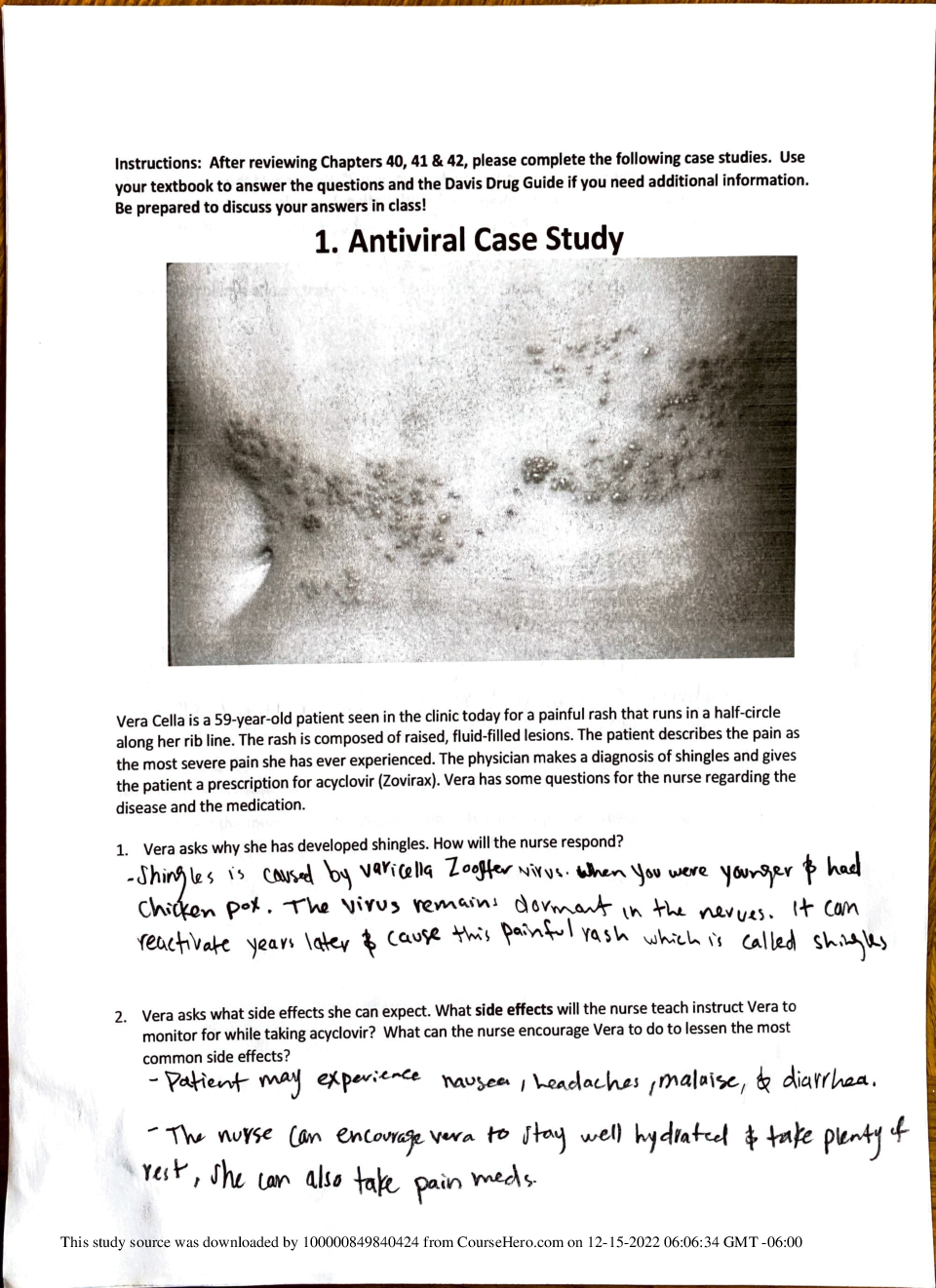


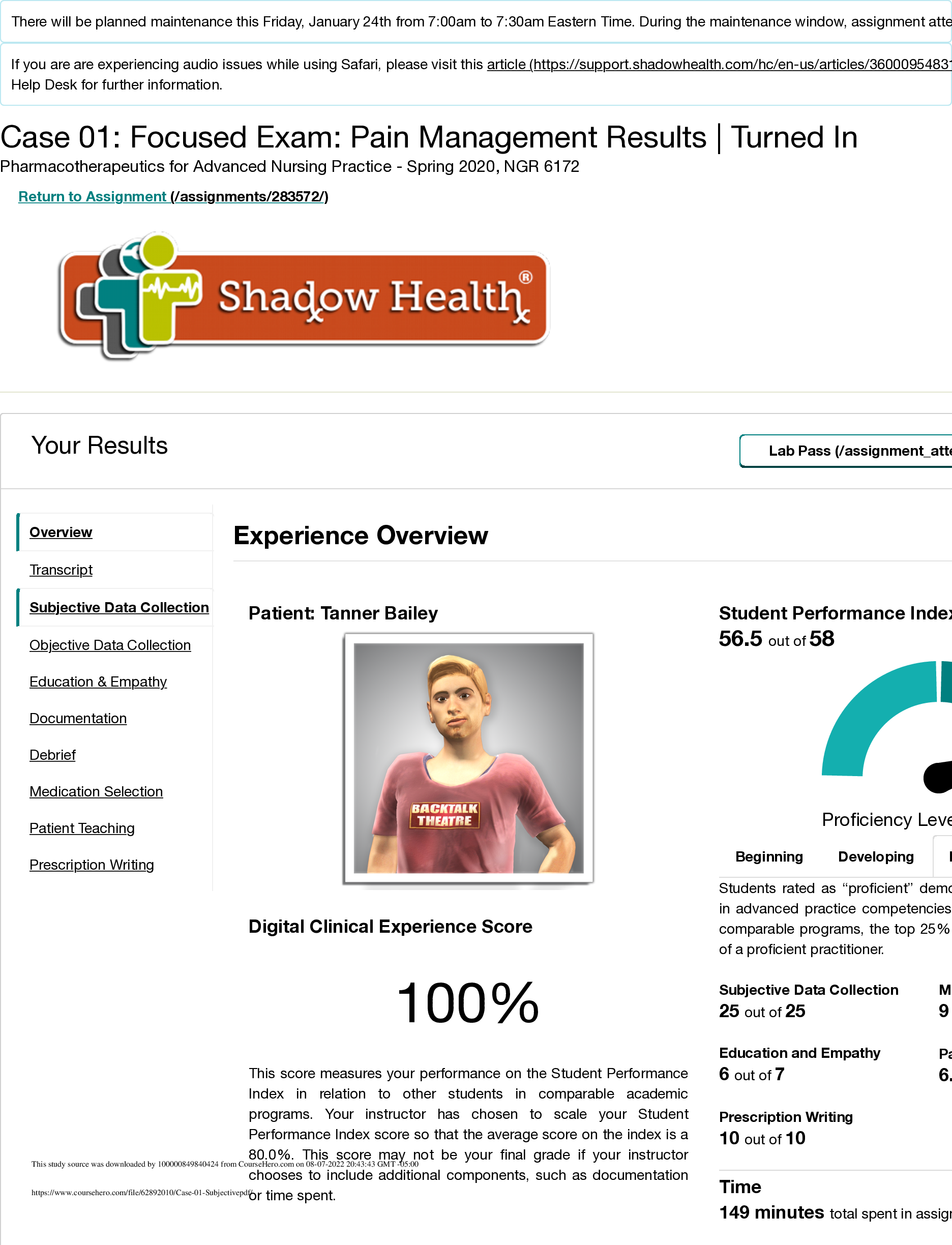


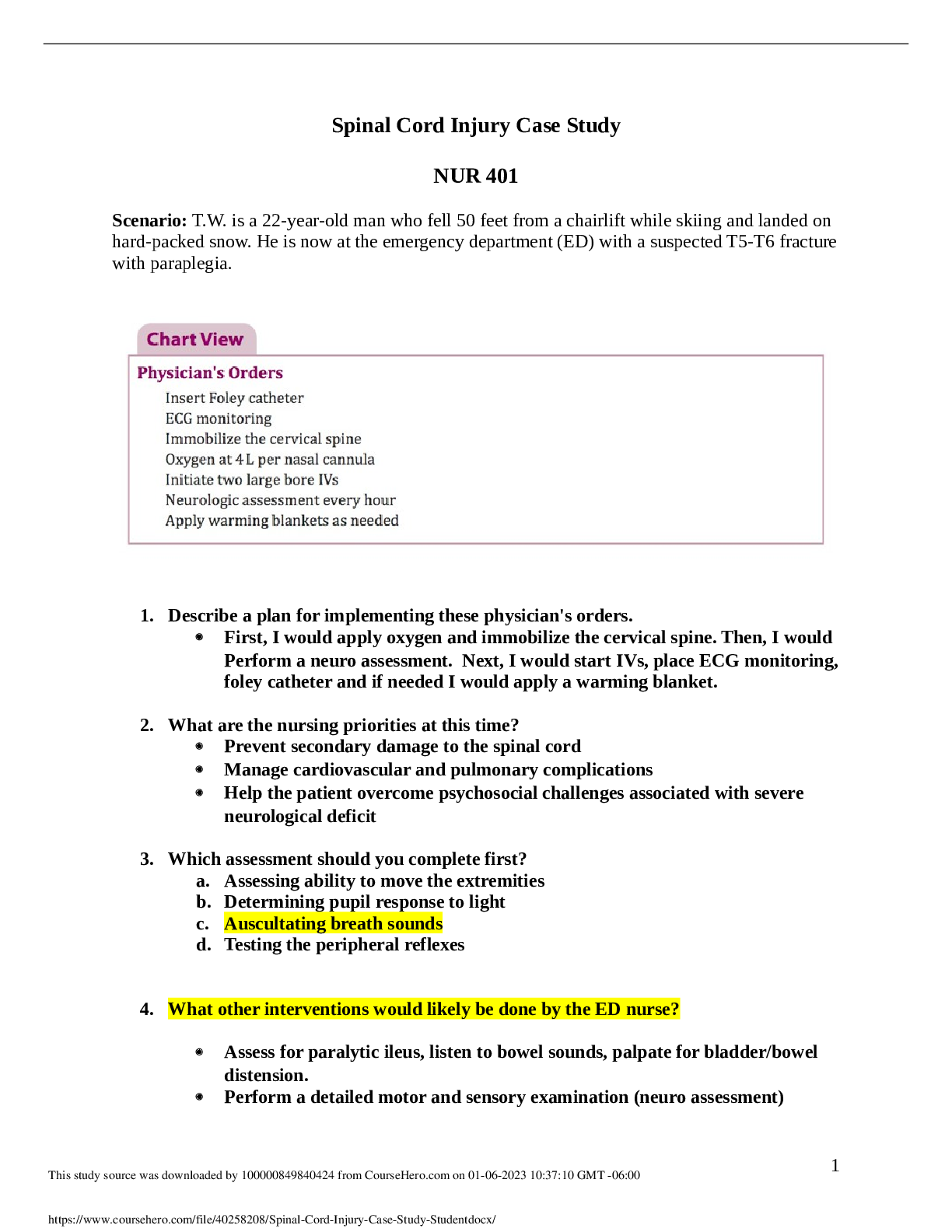
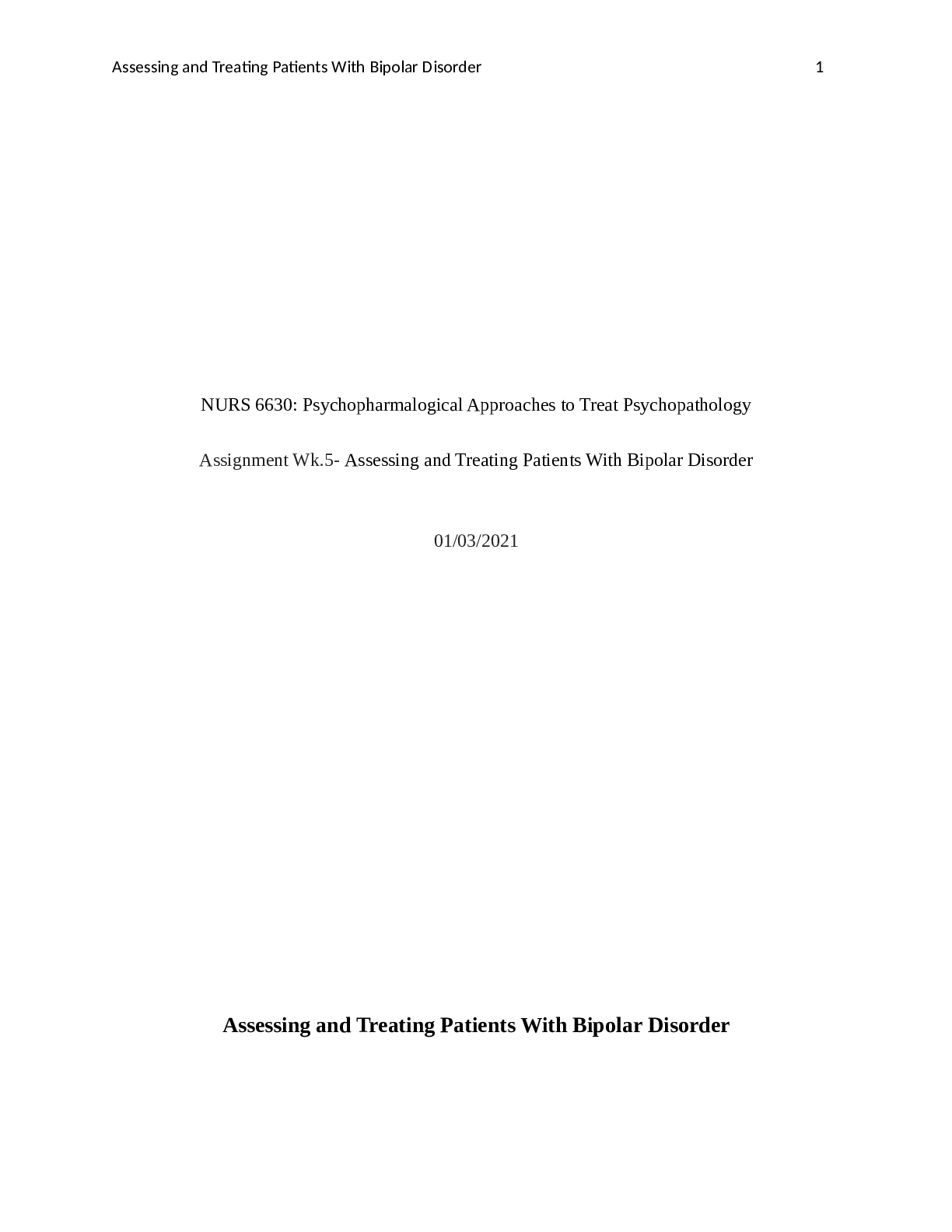


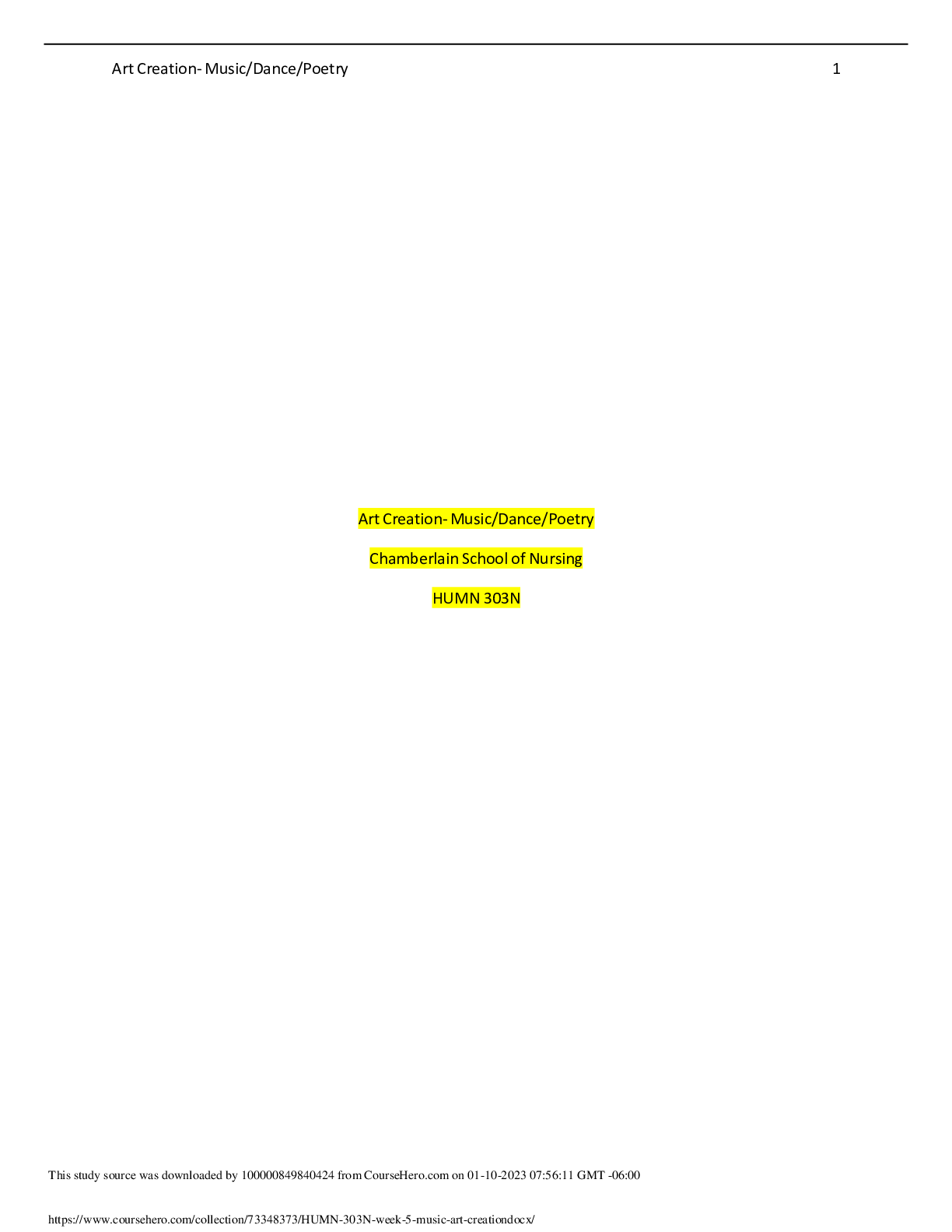

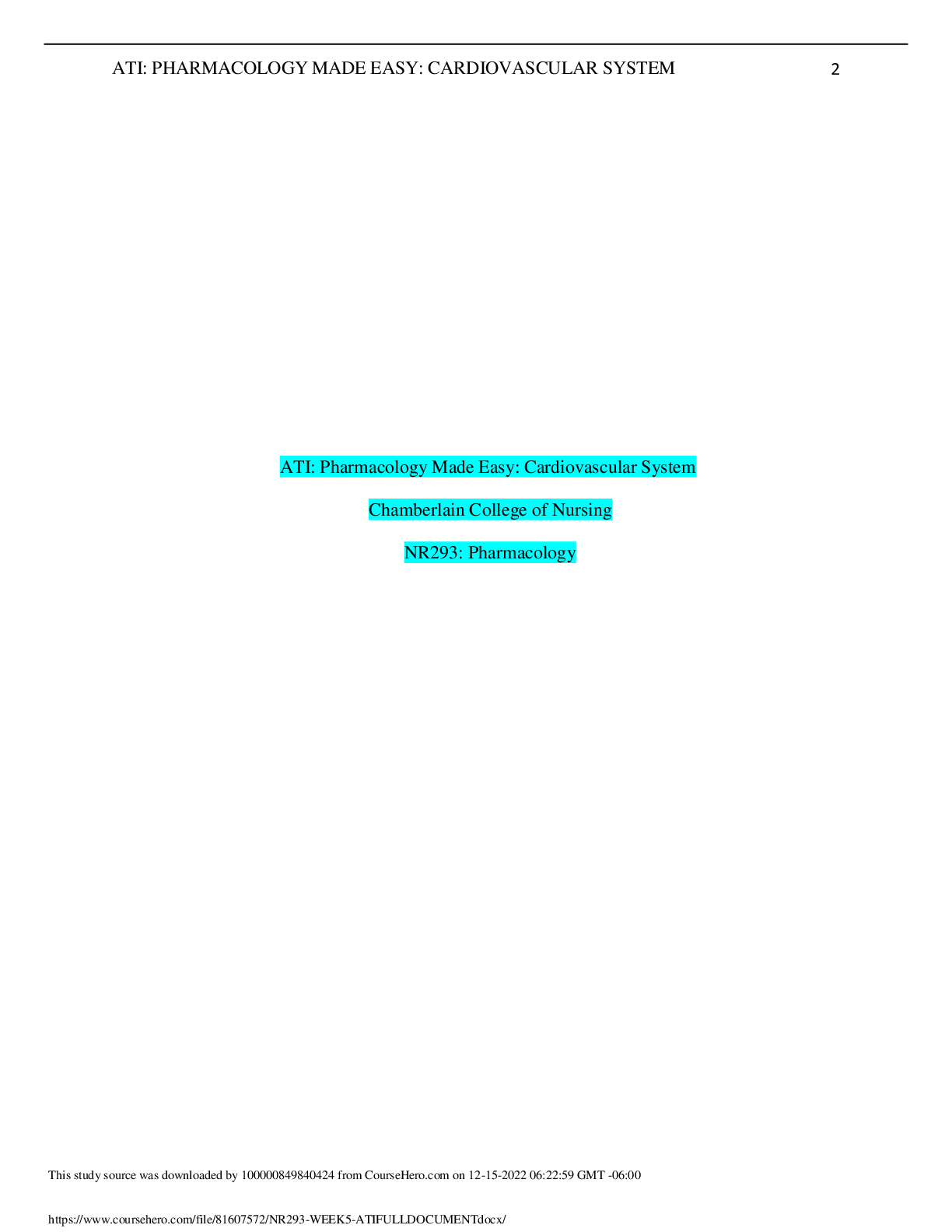
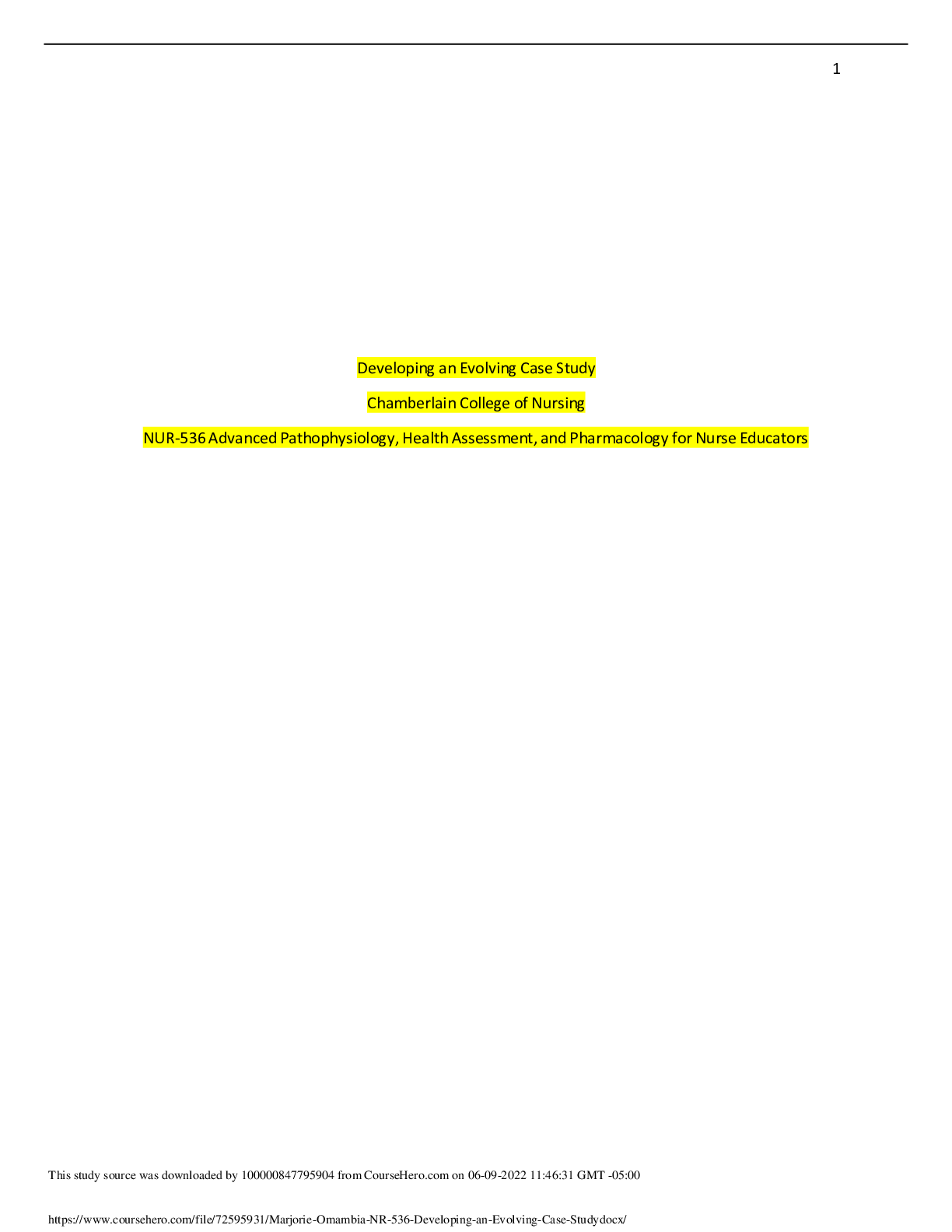
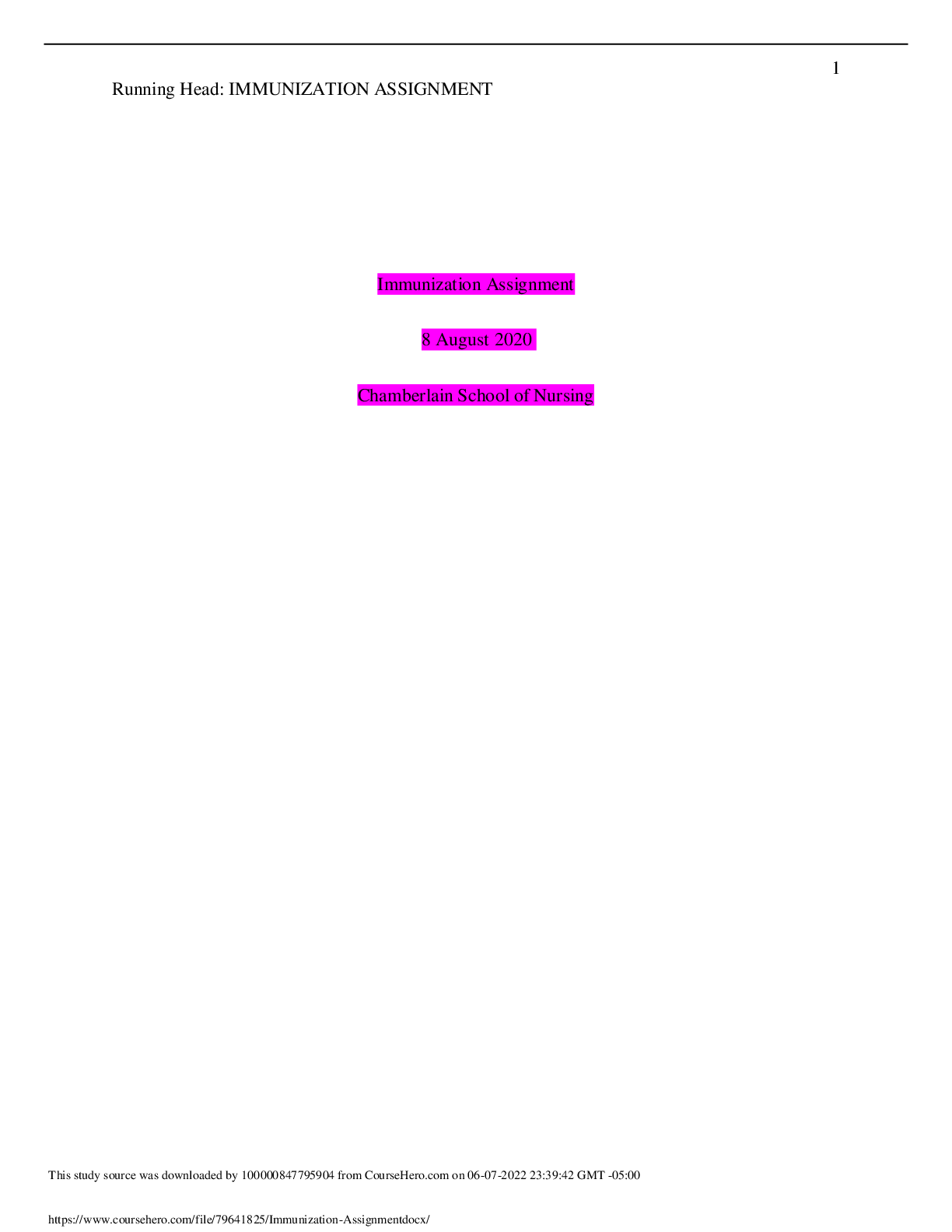
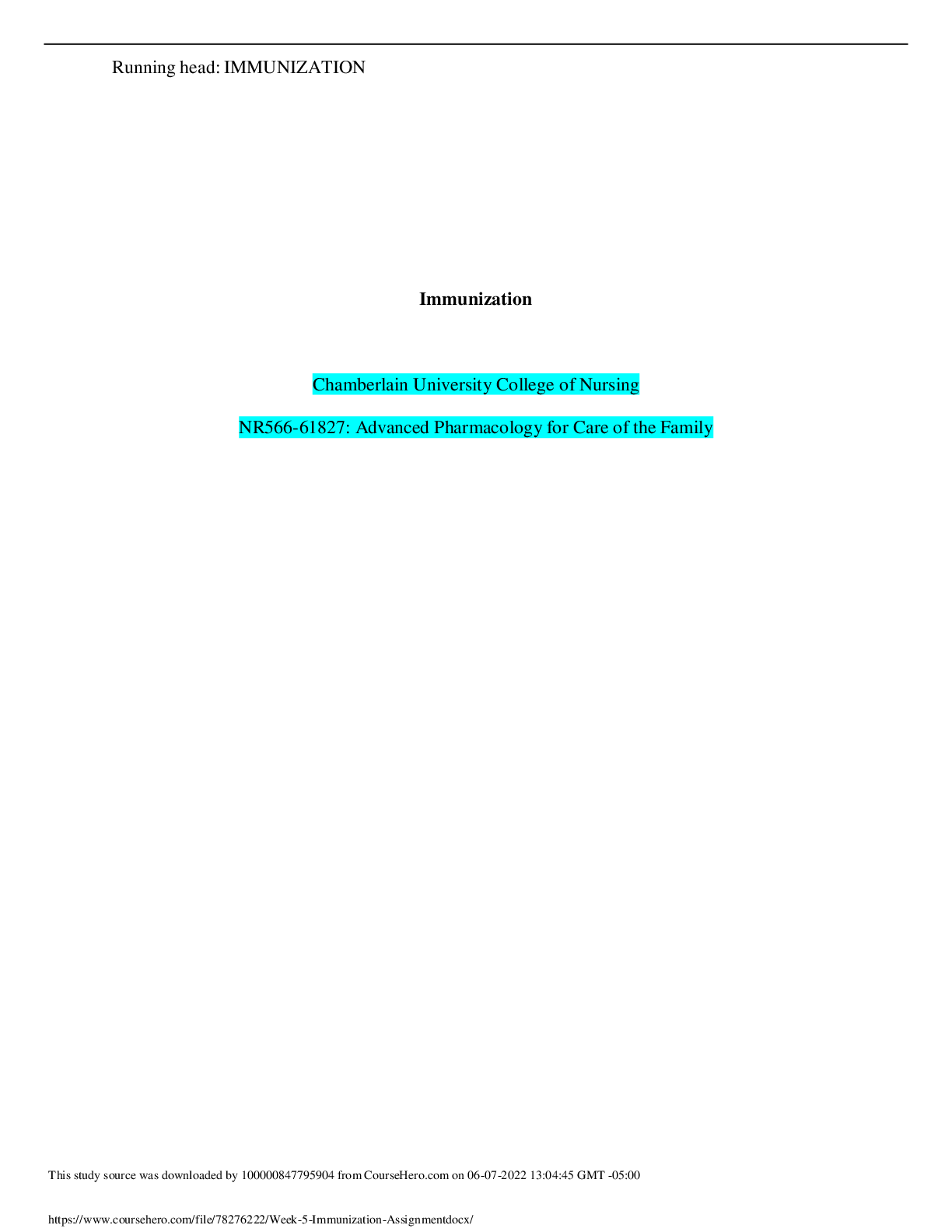



 (1).png)
